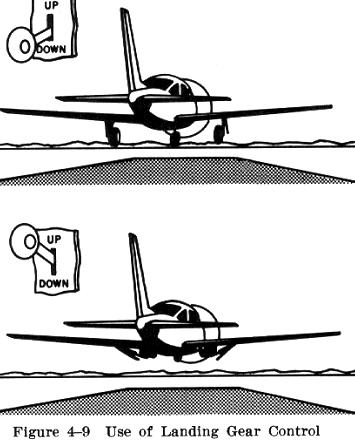The control for operating the landing gear is a switch or lever, often in the shape of a wheel (to differentiate from the flap control which has an airfoil shape), on the instrument panel. When the control is moved to the DOWN position, the gear will extend; when the control is moved to the UP position the gear will retract. In addition to this operating control, an indicator or warning light is located on the instrument panel to show the position of the gear.
The landing gear should be operated only when the airspeed is at or below the airplane's maximum landing gear operating speed (Vlo). Operating at a higher airspeed may cause damage to the operating mechanism. When the gear is down and locked, the airplane should not be operated in excess of the airplane's maximum landing gear extended speed. (Vle).
It is extremely important that the pilot form the habit of positively identifying the landing gear control before attempting to use it to raise or lower the gear. Otherwise the pilot may inadvertently use the flap control and operate the flaps instead of the gear.
